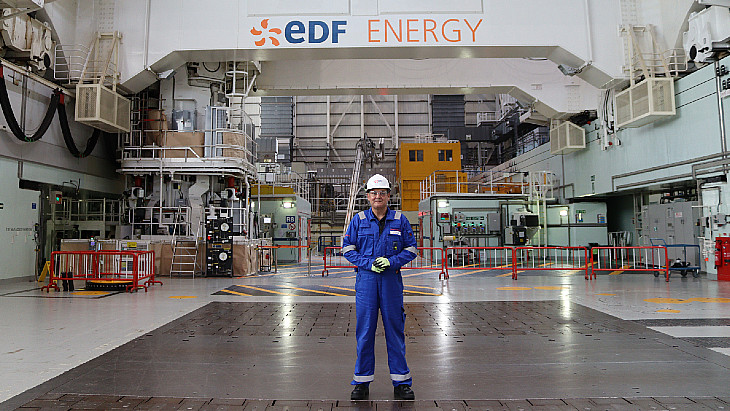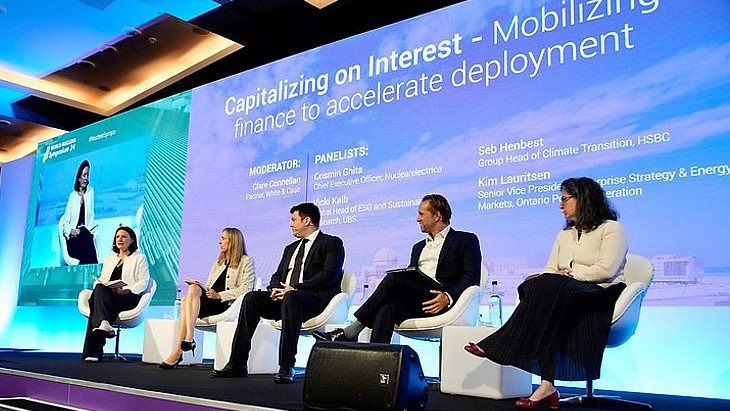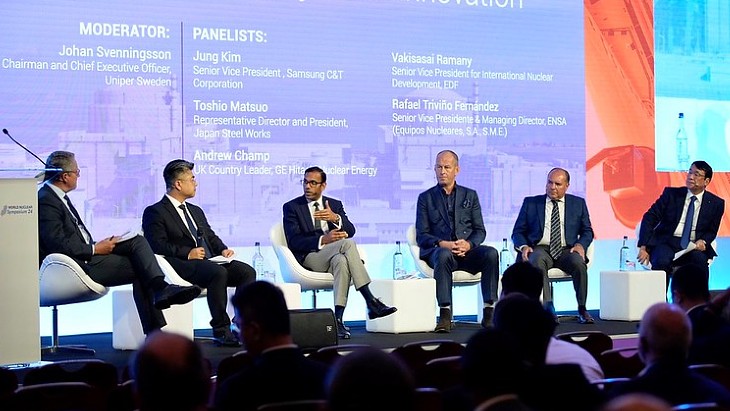Viewpoint: Taxonomy and the need to reform the EU's electricity system

It is not the purpose in this article to give full details on the EU Taxonomy for Sustainable Financing, a process launched more than three years ago by the European Commission. A summary will be provided instead, allowing then to move towards a broader reflection on the European electricity system launched 30 years ago, and under constant reform … and which does not work as desired.
The harsh discussions in Brussels and the European capitals on the inclusion of nuclear and gas in the Taxonomy, combined with the energy crisis directly impacting European citizens in their daily life, provide an opportunity to take a step aside and understand the need for deep reform of the electricity system in Europe.
The purpose of the EU Taxonomy for Sustainable Financing is to guide financing institutions, and investors in general, in deciding where to invest while respecting principles of sustainability. This Taxonomy is embedded in EU Green Deal policies which are aimed at reaching carbon neutrality in the EU by 2050.
Therefore, the main general criteria for an activity to be Taxonomy compliant is to contribute to climate change mitigation or adaptation. In addition, such an activity must also respect the DNSH (Do No Significant Harm) criteria - meaning it can prove it causes no significant negative environmental impact.
The main principles of the Taxonomy were approved at EU level in June 2020, giving to the Commission the full power to develop further the detailed criteria by using Delegated Acts (once published by the Commission, Member States and the European Parliament have up to six months scrutiny period. No amendments are possible: it is a take or leave process. To reject a Delegated Act a large, hard to reach, majority is necessary in Council and a simple majority in Parliament, otherwise it is approved de facto).
The first Delegated Act - related to the climate mitigation and adaptation criteria - was published by the Commission in June 2021. It includes activities connected to the deployment of Renewable Energy Sources (RES). Nuclear and gas were not included, with the Commission proposing to cover these energy sources in a dedicated Complementary Delegated Act (CDA). The European Parliament approved the first Delegated Act in October and the Council by the deadline in December, with nevertheless a noticeable number of Member States either opposing (including France) or abstaining (including Germany).
The draft CDA was issued on 31 December 2021 by the Commission. It gave three weeks to the Member States and the so-called experts of the Sustainable Finance Platform (SFP, established by the Commission as a follow-up of the former Technical Expert Group) to provide comments, after which the Commission would adopt the CDA following the approval by the College of Commissioners.
The Council and the Parliament will then, following the same pattern as for the Delegated Act, have six months scrutiny before approval or rejection of the CDA. The content of the draft CDA, as soon as it came out, led to significant controversy and divergent positions. Both nuclear and gas are considered as helpful for the transition towards carbon neutrality in 2050, nuclear being carbon-free and gas better than coal.
The draft CDA, which might come from a kind of deal between France (supporting nuclear) and Germany (supporting gas), sets a number of constraints in the form of Technical Screening Criteria to be respected for related activities to be recognised as Taxonomy compliant.
Numerous organisations representing different opinions and using diverse channels of communication, have reacted providing their views. On 21 January, the SFP published its analysis, basically opposing the inclusion of nuclear and gas in the EU “Green” Taxonomy. On 2 February, the College of Commissioners approved a slightly revised version of the CDA, which will be published, for scrutiny by the Council and the Parliament, for approval or rejection.
This Taxonomy saga revealed, but also reinforced, the major divergences within the EU on the ideal and/or possible energy mix in a carbon-constrained world, where the EU wants to be a role model. A major concern with the Taxonomy, a real flaw from the start, is that it is based on a concept of sustainability which is too restrictive, and currently only limited to "green" environmental considerations.
Instead, one needs to fight for societal sustainability, a much wider concept based, when looking at energy, on a sound balance between the three pillars of (i) environment protection, (ii) economics and affordability, and (iii) security and reliability of supply. One might give more weight to one pillar over the others, but a balance is needed, otherwise it is not viable for the society.
This "green" approach, one can say dogma, is not new at EU level. The change in words used to name and foster the EU decarbonisation endeavour from "A Clean Planet for All" to the "Green Deal" is symptomatic of the profound influence of the "green" lobby in the EU Institutions.
And this is counterproductive, if not dangerous, for European cohesion, at a time when it is so needed on the wide international and geopolitical scene. It is not to say that environmental considerations, beyond decarbonisation, are not to be handled with the greatest care, but one must realise that other parameters have also to be considered on an equal footing and in taking all views into account.
Coming back to energy, a problem comes from the dash for intermittent renewables, very much promoted by some Member States under pressure of their green political parties, and strongly reflected at EU level with ever increasing targets to be reached.
It seems attractive to try to use "free" energy from the wind and sun, but this energy is intermittent and requires backup installations. There are dreams that massive electricity storage, via batteries, including decentralised in each family using its electric car, or via hydrogen production in the P2P process (Power to Power: “green” electricity producing hydrogen to be burned to produce electricity), then with a very poor efficiency, will be the solution.
Sometimes dreams do come true, but this seems more like a myth. The reality is that the dash for intermittent renewables is associated with a dash for gas. Is it surprising that Germany, which is championing intermittent renewables and is working at EU level (with Austria, Luxemburg and some others) to impose them, is at the heart of the Nord Stream pipelines project?
Each Member State, for sure, decides, based on its democratic process, what energy mix it wants to use. But that principle, enshrined in Article 194 of the European Treaty must be fully applied: if other Member States decide to rely on zero-carbon nuclear energy instead of carbonised gas, and to limit their use of intermittent renewables for electricity production to a manageable fraction, this should be fully respected.
What a manageable fraction means depends on local conditions. Different studies show that, in Europe, an economic optimal could be around 35%, without even mentioning the technical constraints. This brings us to the issue of the cost of electricity and what it contains.
There are three components in the cost. The first component is electricity production costs, at the exit of the production facility and usually called the Levelised Cost of Electricity and is composed of the overnight capital cost of construction and the financing costs, the fuel and operation costs, provisions for waste management, etc. The second is composed of system costs, beyond the production facility, the costs of the electricity system operation including flexibility and balancing costs, which are particularly important for intermittent renewables, but also connections, transmission and distribution costs. The last component is external costs, in particular social and environmental costs, including a CO2 tax when fossil fuels are used to generate electricity.
Up until recently, only the Levelised Cost of Electricity has been used to compare the cost of electricity production with different sources. This is not enough. It is necessary, to allow a fair comparison, to take all costs into account. Therefore, the cost of intermittency (meaning the cost of the backup, be it by storage or fossil plants) needs to be attributed to the Levelised Cost of Electricity of intermittent renewables and not hidden in overall system costs. Without forgetting that the cost of CO2 needs to be added when using fossil fuels as backup for intermittent renewables.
Remembering that the cost of deployment of intermittent renewables in Germany has cost the country around EUR500 billion (USD565 billion) over 20 years, without even counting the cost of backup technologies, gives us an idea of the economic and social impact of such a policy if it were to be imposed at EU level.
The next problem hindering the application of Article 194 of the Treaty is the electricity market, which was launched in the 1990s following the liberalisation wave of the Reagan-Thatcher era, very much promoted by the European Commission and adopted by the Member States.
The promise was to reduce the price of electricity for the consumers. After 30 years of de-structuring, unbundling, restructuring, adding layers of rules over layers of rules, where do we stand today? What we have is not working: it is simply not delivering on its promise.
The original concept of the electricity market became further flawed when intermittent renewables came into the picture: the system was mixing apples and pears. Mixing small decentralised intermittent facilities, but having priority access, with large centralised dispatchable facilities, simply cannot work properly.
Today the cost of electricity and its price are decoupled. What is paid by the consumer does not reflect the true cost of the electricity. Consumers have no idea anymore of what is behind their bill. It is too complex to understand, and there are too many hidden interests.
It is high time to reform, deeply reform, the electricity system (avoiding the term market) in Europe and to provide long-term vision on how it can function in a stable and healthy way, integrating the principle that electricity is a common good and not a commodity, with the obligation to have permanent equilibrium between production and demand. This might best be done under the control of the State, which bears responsibility towards its citizens-consumers-taxpayers, and probably via vertically integrated organisations.
And to respect the principle of Article 194, this electricity system must ensure that the energy mix chosen by one Member State does not hinder, or even perturb the choice of the others. This may appear anti-European. It is not, on the contrary. One has to take full notice of what the Taxonomy has revealed: the deep divide between the green pro-100% intermittent renewables, the pro-nuclear and the pro-gas.
Pursuing, without a profound revision of the way Article 194 is applied, by ensuring that each Member State can really decide on its own on its energy mix, without undue pressure being brought by others, brings a much greater risk for the cohesion of the European Union. And this profound revision implies, necessarily, a reform of the European electricity system.
Energy has been at the core of the creation of the EU, it should not be a source of deep divide. Energy is the blood of the economy. The time has come to go beyond the green dogma, beyond pure environmental considerations, and to take full grasp of the sustainability of the European society, for the wellbeing of the European citizens. Member States should instruct the European Commission to start working along the lines above and come back soon with sound proposals. Time is at stake, and with other parts of the world moving ahead, it is also a geopolitical priority.
(This article was originally published on weCARE's website)










